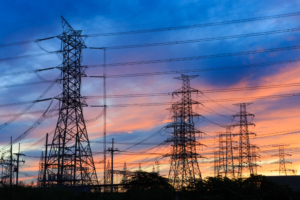A proposal by Montgomery County highlights a fundamental divide over how Maryland should go about decarbonizing buildings and how decarbonizing legislation could ultimately impact building owners.
In comments submitted to the Buildings Subgroup of the Maryland Commission on Climate Change, the Montgomery County Department of Environmental Protection recommended the state focus more on energy efficiency and adopt the county’s proposed energy benchmarking and performance standard for commercial and multifamily buildings. The Maryland Department of Environment (MDE) has traditionally resisted energy benchmarking. The state’s approach has focused on reducing carbon emissions first and uses a different approach to carbon accounting.

Montgomery County’s energy benchmarking system, which has been proposed by county administration but not yet adopted by council, assigns a site energy use intensity (EUI) target to each building type. The county assesses past energy use to set a baseline EUI for each covered building. Every four years, the county reevaluates properties on whether they are meeting progressively lower energy use targets. The county is developing a suite of incentives and penalties to accelerate adoption.
The state measures carbon emissions from various sectors through an economy-wide inventory conducted every three years. That inventory assigns emissions from electricity generation to the utility sector, not to the buildings that ultimately use the electricity. Emissions from onsite combustion of fossil fuels for cooking, heat and hot water, however, are assigned to the building sector. Up until now, state regulators have considered tracking and benchmarking energy use of individual buildings as cumbersome and aligning poorly with their carbon-focused approach.
State targets require public utilities to increase the amount of zero-emission electricity sold in-state. State officials believe the speed of the transition to zero-emission electricity sources will have the most impact on overall carbon emissions.
An energy transition plan for buildings is due from MDE by the end of 2021. The Department has hired Environment and Energy Economics (E3) to study least-cost approaches to reducing carbon emissions from buildings. MDE commissioned the firm to answer two broad questions – namely, what pathways will achieve deep decarbonization of Maryland’s building stock by mid-century and what are the costs and benefits of each pathway.
The metric used to measure building performance – energy consumption or carbon emissions – will have implications for building owners, utility operators and incentive programs. An energy consumption metric could compel building owners to undertake deep energy retrofits that may deliver diminishing carbon-reduction benefits as the grid increasingly uses wind and solar power. Energy efficiency and grid integration costs borne by building owners substantially benefit utility companies by reducing the need to expand zero-carbon electric generating and distribution capacity. A carbon-first approach focuses on a discrete number of buildings and may compel rapid electrification, which may have long payback periods and lower Energy Star scores.
In 2022, the Maryland General Assembly plans to address the building sector’s role in climate mitigation. That debate will involve fundamental questions about how to develop a responsible framework for buildings to meet the state’s climate targets in a way that is equitable, cost effective and technologically sound.